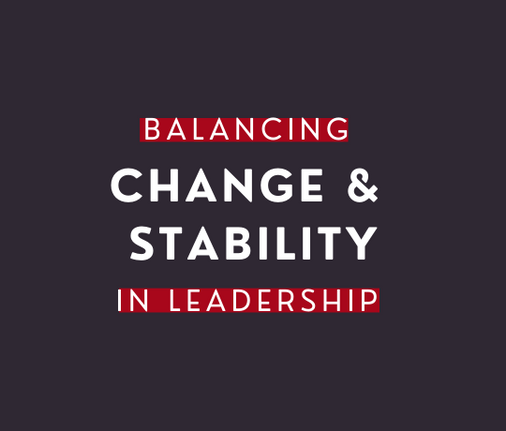In order for employees to navigate change confidently, leaders need to create a stable and supportive work environment. Find out how to do that with these insights from career coach Marisa Thomas.
In today's rapidly evolving world, leaders face the challenge of balancing change and stability within their organizations. On one hand, change is necessary for growth, innovation, and staying ahead of the competition. On the other hand, stability provides a foundation of trust, consistency, and reliability. The art of balancing these two seemingly opposing forces is what sets exceptional leaders apart.
This piece will explore how leaders can navigate this delicate dance and create a harmonious equilibrium between change and stability.
Embracing Change
Change is inevitable and necessary for progress. Great leaders encourage a culture of innovation and continuous improvement, where new ideas and experimentation are welcomed.
By fostering an environment that embraces change, leaders empower their teams to think creatively, challenge the status quo, and adapt to new realities. However, embracing change does not mean blindly chasing every new trend or idea.
Leaders must carefully evaluate the potential impact of change on their organization and its stakeholders. Risks, costs, and benefits all need to be carefully considered. By being strategic and discerning, leaders can ensure that change is purposeful and aligned with the organization's vision and values
Providing Stability
While change is essential, stability is equally important. Stability provides a sense of security, consistency, and predictability for employees, customers, and other stakeholders. It establishes a solid foundation upon which innovation and growth can thrive. Leaders who prioritize stability create an environment where employees feel safe to take risks.
To provide that stability, leaders should establish clear goals, communicate effectively, create a sense of purpose, and ensure that resources and support are available. By fostering a stable and supportive environment, leaders build trust and loyalty among their employees. This enables them to navigate change confidently.
Finding the Balance
Exceptional leaders understand that change and stability are not mutually exclusive but complementary forces that can propel an organization forward.
One of the best ways to find that sweet spot is to involve employees throughout the process. By communicating the vision for change, providing a clear roadmap for implementation, seeking the team’s input, and addressing concerns, leaders can reduce employee anxiety around change.
Leaders also need to recognize that change is not a one-time event. It’s an ongoing process. Impact needs to be measured, feedback needs to be gathered, and adjustments need to be made continuously. It’s important to remain agile and adaptable, ready to embrace new opportunities and navigate unforeseen challenges.
Marisa's new book The Power to Lead: How to Optimize Your Energy to Thrive in Leadership is available now! Get your copy.



-1.png?width=400&height=400&name=Untitled%20design%20(2)-1.png)
-Nov-07-2023-06-38-17-8684-PM.png)